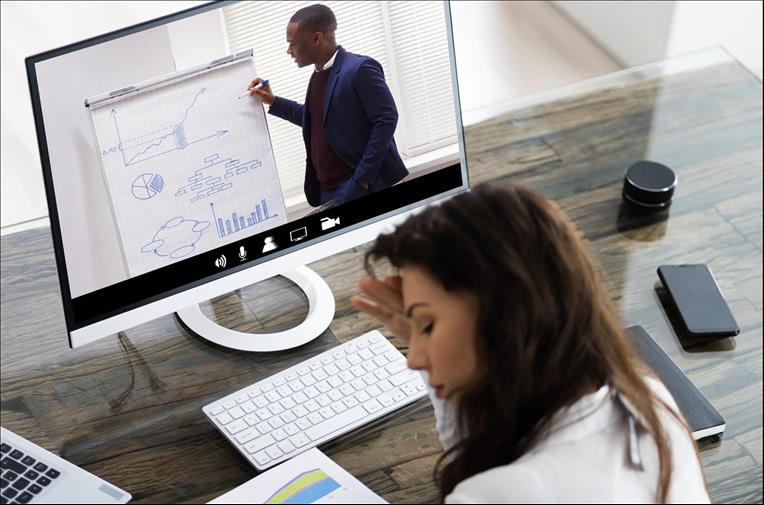
Good riddance to boring lectures? Technology isn''t the answer understanding good teaching is
(MENAFN- The Conversation) With some universities returning to face-to-face teaching this year, ANU Vice Chancellor Brian Schmidt that, while his university was one of them, lectures would be much less common and not a ''crutch for poor pedagogy''. Since then many have , including the deputy vice chancellor of University of Technology Sydney and the director of the National Centre for Student Equity in Higher Education in Western Australia, with ideas ranging from .
Condemnation of lectures is . However, the sudden, massive shift to reliance on technology due to COVID has brought increasing calls for ending the venerable lecture. Lectures will, we are told, be replaced by superior, .
Underlying these messages are two tacit assumptions: that lectures make for bad teaching and that using technology improves it. But are these reliable assumptions? Rather than simply rejecting lectures and embracing technology, perhaps we should be looking more closely into both, and their relationship to each other.
Read more:
Our love-hate relationship with lecturesDiscussions about getting rid of lectures follow predictable patterns. The most common complaints centre on lectures as . Accompanying these critiques is the oft-cited rule that students'' attention span has a limit of .
While there is , we can all identify with struggling to remain awake as we are droned at from a lectern. But most of us can also recall times we were spellbound by a lecture. Anyone who has attended a great TED Talk or even watched one on YouTube knows what it's like to be captivated for that .
Can lectures hold people's attention beyond 18 minutes, though? The late Professor Randy Pausch was well known for the power and quality of his lectures, especially his final one, '' '', which he delivered after receiving a terminal diagnosis of pancreatic cancer. That lecture comes in at a little over one hour and 15 minutes, and many consider it to be a masterwork of .
Clearly, extended lectures can have great impact. Achieving that impact, however, requires understanding what makes for good lecturing and then committing to improvement.
Randy Pausch's Last Lecture.
Read more:
Push the boundaries and reflect on your practicePausch challenges the stereotype of what a lecture is. He uses to push the boundaries of the lecture beyond a typical, didactic engagement. The result is a lecture that periodically shifts how the audience is engaged and, in doing so, captures and keeps the audience's attention.
Lecturing at this level requires more than just experience. We must , evaluate the quality of our lectures in relation to our intentions, and then commit to developing both our lectures and ourselves.
Professor Eric Mazur describes how, while teaching physics at Harvard in the 1990s, he came to the painful realisation that to keep his students engaged or serve the educational objectives of the subject. He used this realisation as a springboard to improve his lectures and develop his pedagogical knowledge and skills.
Since then, Mazur has become a recognised expert in improving student engagement. He has created a variety of solutions for academics to keep students actively engaged in lectures, even those that go beyond the apocryphal 18-minute limit. The techniques range from to to promote students'' pre-lecture preparation.
Read more:
Lose the assumptions, not the lecternSo then what about the claim that technology is making the lecture obsolete? This seems doubtful for a couple reasons.
Pausch and Mazur's methods can be transferred to an online space, even if we don''t label the result a lecture. We see many examples of how this works in well-regarded online learning platforms like or (formerly ). However we label these engagements, it's obvious technology can actually help lectures rather than just supplant them.
Now let's turn the question around: does using technology guarantee or even increase the likelihood of good teaching? Technology can make good practices easier, like the use of . Technology can even for teaching. But there are no guarantees.
The list of ed tech failures is . Examining what goes wrong, we see some .
One of these is that adding technology equals enhancing teaching. Technology carries no inherent pedagogical value. Swapping an iPad for a lectern does not, in itself move learning from a boring, didactic experience to interactive, lively engagement.

A didactic, boring lecture is poor teaching whether delivered online or in person.
Just like lectures, our uses of technology and the resulting impact must first come from thoughtful commitment to improving both teaching and teacher.
Read more:
Be critical, be reflective, be betterTechnology can never substitute for critically reflecting on the pedagogical value of our practice. And while technology can assist a major transformation, it should never be a requirement for improving how we teach. Whether you''re a high-tech or low-tech teacher, you can give a good lecture or find useful alternatives if you remember to put the pedagogy before the technology.
We need to reject the notion that lectures will sink our students and technology will save them. Instead, let's dig deeply and critically into both, reflect upon how to improve our practices, and apply sound teaching methods and practices to create learning engagements that are captivating and profound.

Legal Disclaimer:
MENAFN provides the
information “as is” without warranty of any kind. We do not accept
any responsibility or liability for the accuracy, content, images,
videos, licenses, completeness, legality, or reliability of the information
contained in this article. If you have any complaints or copyright
issues related to this article, kindly contact the provider above.


















Comments
No comment